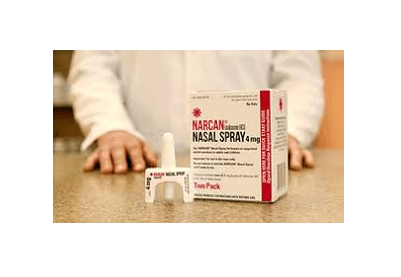
Despite huge overall increase in prescribing, more needed in rural areas
The overdose-reversing drug naloxone saves lives – but only if it’s readily available when an overdose occurs.
Despite a huge increase in naloxone prescribing in recent years, CDC researchers report in the latest Vital Signs study published today that far too little naloxone is being dispensed in many areas of the country that need it the most.
Moreover, too few doctors are prescribing naloxone to patients receiving high-dose opioids or opioids plus benzodiazepines or to those with a substance use disorder as recommended by CDC’s Guideline for Prescribing Opioids for Chronic Pain. Nearly 9 million more naloxone prescriptions could have been dispensed in 2018 if every patient with a high-dose opioid prescription were offered naloxone.
Alex Azar, Secretary, Department of Health and Human Services
“Thousands of Americans are alive today thanks to the use of naloxone,” said HHS Secretary Alex Azar. “Giving people a chance to survive an opioid overdose and safely enter recovery is one of the five key pillars of our HHS strategy for ending the overdose epidemic. With help from Congress, the private sector, state and local governments, and communities, targeted access to naloxone has expanded dramatically over the last several years, but today’s CDC report is a reminder that there is much more all of us need to do to save lives.”
Examining trends in naloxone dispensing
In 2017, 47,600 people in the U.S. died as a result of drug overdoses involving opioids. The prescribing and dispensing of naloxone is a critical part of the public health response to the opioid overdose epidemic.
Naloxone has been used for many years by emergency medical services, first responders, and community-based overdose prevention programs. Current efforts have focused on expanding access to naloxone through prescribing and pharmacy-based distribution.
Up-to-date information on pharmacy-based naloxone dispensing is needed. To address this gap and to inform future overdose prevention and response efforts, CDC examined trends and characteristics of how naloxone is dispensed from U.S. retail pharmacies at the national and county levels.
While the findings show an increase in naloxone dispensing from 2012 to 2018, study data confirm additional efforts are needed to improve naloxone access at the local level. Wide variations in dispensing in pharmacies exist, despite consistent state laws.
In 2018, rural counties had the lowest dispensing rates. Primary care providers wrote only 1.5 naloxone prescriptions per 100 high-dose opioid prescriptions – a marker for opioid overdose risk – and over half of naloxone prescriptions required a copay.
Key findings
- The number of naloxone prescriptions dispensed doubled from 2017 to 2018.
- Only one naloxone prescription is dispensed for every 70 high-dose opioid prescriptions nationwide.
- Most (71%) Medicare prescriptions for naloxone required a copay, compared to 42% for commercial insurance.
- Rural counties were nearly 3 times more likely to be a low-dispensing county compared to metropolitan counties.
- Naloxone dispensing is 25 times greater in the highest-dispensing counties than the lowest-dispensing counties.
Robert Redfield, MD, CDC Director
“It is clear from the data that there is still much needed education around the important role naloxone plays in reducing overdose deaths. The time is now to ensure all individuals who are prescribed high-dose opioids also receive naloxone as a potential life-saving intervention,” said CDC Director Robert R. Redfield, M.D. “As we aggressively confront what is the public health crisis of our time, CDC will continue to stress with healthcare providers the benefit of making this overdose-reversing medicine available to patients.”
Working together to prevent opioid overdoses
CDC recommends that healthcare providers consider offering naloxone to all patients at risk for overdose. Some risk factors make patients particularly vulnerable to prescription opioid overdose, including taking high daily dosages of prescription opioid pain relievers, using benzodiazepines concurrently with opioids, and having a history of substance use disorder.
This is a press release from the Center for Disease Control & Prevention.


Bulloch Public Safety
12/12/2025 Booking Report for Bulloch County

Georgia Politics
Gov. Kemp to Sen. Padilla: Stop Playing Politics With American Hero

Bulloch Public Safety
12/11/2025 Booking Report for Bulloch County

Bulloch Public Safety
11/24/2025 Booking Report for Bulloch County

Bulloch Public Safety
12/01/2025 Booking Report for Bulloch County

Bulloch Public Safety
11/17/2025 Booking Report for Bulloch County

Bulloch Public Safety
11/26/2025 Booking Report for Bulloch County

Bulloch Public Safety
12/08/2025 Booking Report for Bulloch County






